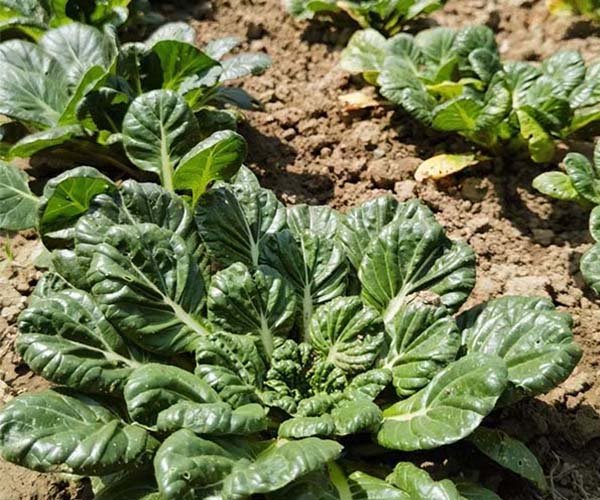Chitosan oligosaccharide(COS) is an oligosaccharide obtained from chitin through enzymatic catalysis and deacetylation. As a biostimulant, can induce the plant immune system to enable plants to acquire or improve resistance to pathogens and stress resistance.
There are 10 most knowledgeable Q&A about chitosan oligosaccharide(COS):
1. What is chitosan oligosaccharide(COS)?
Answer: Chitosan oligosaccharide is a kind of polymerization degree obtained by degrading chitosan through special biological enzyme technology (also produced by physical and chemical technology) with a degree of polymerization of 2~20. Among the oligosaccharide products, it is a low molecular weight product with good water solubility, great function and high biological activity. It has many unique functions such as high solubility and easy absorption that chitosan does not have.
2. How is chitosan oligosaccharide production process?
Answer: Chitin is a polymer made of N-acetylglucosamine connected by β-1,4-glucosidic bonds. After treatment with strong alkali, the acetyl group is removed to become chitosan, and then degraded into a low-molecular-weight shell. oligosaccharides.
3. What are the physical and chemical properties? What are the differences with chitosan?
Answer: COS has low molecular weight and high solubility, even if the pH is above 10, it can be dissolved in water, while chitosan can only be dissolved in acidic solution, so chitosan oligosaccharide can be absorbed by organisms when dissolved in water. Utilization, showing physiological activity.
Oligochitosan does not have the polymer properties of chitosan, such as film-forming properties, forming high-viscosity solutions, etc.;
Chitooligosaccharide molecules contain exposed amino groups and hemiacetal hydroxyl groups, which can easily undergo condensation reactions under high-concentration and high-temperature conditions to form Schiff bases;
COS solution has a strong reducing property, and oxidation reaction will occur in the presence of oxidizing agents or exposure to air;
After the chitosan oligosaccharide is salted, the exposed amino group is protected and the stability is enhanced;
The residual sugar group of chitosan oligosaccharide has an amino group on C2 and a hydroxyl group on C3, which makes it have a chelating effect on metal ions with a certain ionic radius;
There are amino groups in chitosan oligosaccharides, so it is an alkaline substance, which can absorb H+ in the solution, and can absorb acidic substances in the body, so that the internal environment can be changed to a more alkaline direction, and the internal environment can be improved.
4. What are the properties and functions?
Answer: 9 major functions:
(1) Prevention and treatment of plant diseases
(2) Promote plant growth, promote calcium and mineral absorption
(3) Improve animal immunity
(4) Improve animal growth performance
(5) Food flavor enhancement, antiseptic preservation
(6) Detoxify, protect the liver and improve immunity
(7) Lower blood sugar, prevent cancer and fight cancer
(8) Skin moisturizing, whitening, anti-aging
(9) Skin antibacterial, anti-radiation.
5. What are the main factors that determine the color of chitosan oligosaccharides? Is the difference in color necessarily related to its function?
Answer: The main factors affecting the color of chitosan oligosaccharides:
(1) Colored impurities in raw materials and auxiliary materials are generally black substances. And there are also other color substances;
(2) COS reaction, COS Maillard reaction (carbonyl ammonia reaction) produces a black substance that mimics melanin;
Oxidation of chitosan oligosaccharides deepens the color.
6. Why does chitosan oligosaccharide powder become so viscous soon after place in the air?
Answer: COS has a strong hygroscopic property. And it will absorb moisture when it is exposed to the air (humidity ≥ 40%). The viscosity of the sugar solution with a very high concentration will be very high.
7. Oligochitosan is an alkaline. Why is the pH in its water-soluble state acidic?
Answer: Oligochitosan has amino basic groups. The reason is: to degrade chitosan by biological enzymatic method, chitosan must be dissolved with acid, and the exposed amino group will be protonated, so chitosan oligosaccharide will be acidic when the acid is exposed after being dissolved in water.
8. What is the degree of deacetylation?
Answer: The degree of deacetylation of COS refers to the ratio of the number of non-acetyl monomers in the homologous mixture of chitosan oligosaccharides to the total amount of monomers.
The production process of chitosan oligosaccharide is as follows:
- Decalcification and deproteinization of shrimp and crab shells to form chitin
- Deacetylation of Chitin to Chitosan
- Chitosan eventually degrades into chitooligosaccharides
This is a process of deacetylation, so we call it degree of deacetylation.
9. The smaller the molecular weight, the darker the color?
Answer: The color of chitosan oligosaccharide has no direct relationship with the molecular weight. Pure chitosan oligosaccharide is white. In the process of enzymatic hydrolysis of chitosan into oligochitosan, the smaller the molecular weight, the longer the time for enzyme action, which increases the time that the chitosan oligosaccharide solution is in contact with air at a constant high temperature. And the chitosan oligosaccharide is oxidized, making it after spray drying, the color is darker and the content is lower.
10. What is the relationship between the content of chitosan oligosaccharide(biological enzyme method) and pH?
Answer: Biological enzymatic hydrolysis requires chitosan to be in a dissolved state. But chitosan is insoluble in water and can only be dissolved by adding acid. This makes the chitosan oligosaccharide solution produced by the biological enzymatic method contain bound acid and residual free acid. Part of the acid remains in the oligochitosan powder after spray drying, which is why the oligochitosan solution is acidic. So the level of pH indirectly reflects the quality of chitosan oligosaccharides.


